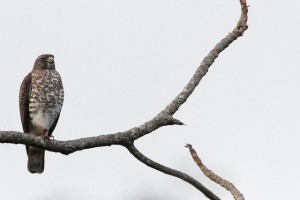Q: Which bird that migrates to or through the Bay Area travels the farthest to get here from its breeding grounds? Where does it come from and where does it go? [Jason, Oakland]
A: In October 1977, during my first pelagic birding trip in the middle of foggy Monterey Bay, I was carefully studying the drawing of a bird I had just seen (a south polar skua) when Rich Stallcup, the boat naturalist (now with PRBO Conservation Science), suddenly shouted something I couldn’t make out. “Did he say ‘comic’ tern?” I asked the elderly woman next to me. “Yep,” she replied. Even Rich, one of California’s premier birders, could not distinguish at that foggy distance between the common and the arctic tern. They look a lot alike, especially in autumn plumage and from the deck of a rolling ship. So we had to make do with the combo “comic” tern. Not something to add to your life list, but I think of it as my first possible sighting of a champion migrator.
Terns are closely related to gulls. I like to think of gulls as basic Ford pickup trucks–durable, tough, long lasting, but not too fancy. Terns are more delicate, can turn on a dime, and hover nicely in place, a bit more like Porsches. Like all terns, arctics mate for life and usually migrate together.
In the Bay Area, arctic terns are usually only seen far offshore and during the autumn. They fly south from nesting grounds well north of the Arctic Circle all the way to southern Chile, traveling as far as 15,000 miles. In its average 25-year life span, an individual arctic tern may fly over a half a million miles! (Our planet is only 25,000 miles around.) Arctic terns spend more time in daylight than any other species on earth and for many years were considered the premier migrators on the planet.
But in 2005 that changed. Research biologist Scott Shaffer and his colleagues at UC Santa Cruz outfitted some sooty shearwaters with radio tags and tracked them for over 200 days. The sootys (relatives of albatrosses) leave their New Zealand breeding colonies and travel all the way north to California to spend the austral winter in our summer. Here they feed just offshore on krill and squid in our nutrient-rich waters. They molt their flight feathers in the process (an energy-intensive event). In the fall they funnel back south to New Zealand, covering a total of more than 40,000 miles!
Arctic terns are too small to be electronically tagged, so we can only estimate the distance they migrate. Sooty shearwaters go the farthest but arctic terns still win the sunbathing contest. Your best chance of seeing either in California is on a pelagic bird or whale-watching trip, though sootys sometimes congregate in huge flocks resting on the water close to the coast.

